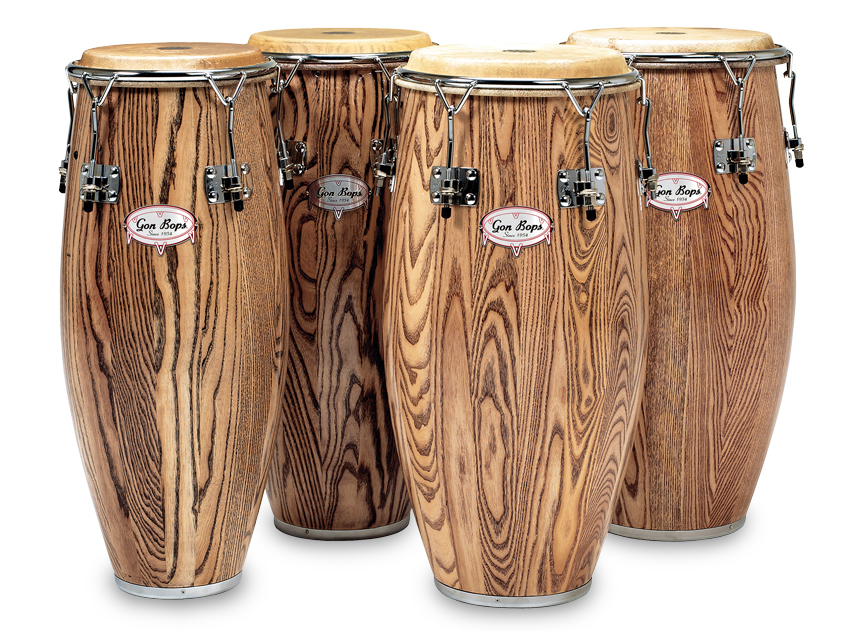9 percussion programming tips

There's nothing like a good percussion part to spice up your track - both rhythmically and texturally.
Even the addition of just a simple conga or shaker part can transform a dull rhythm track into a more complete sounding, syncopated, 'human' groove, particularly if the main drums are overtly electronic sounding.
With this in mind, we've gathered together nine expert tips that will help you to make your percussion parts hit the spot.
For a complete guide to percussion, check out the June 2012 issue of Computer Music magazine (CM178).
Quantise theory
Should you quantise your percussion? The answer to that question depends on the sort of feel you're trying to achieve and the groove of the rest of your track. Good percussion parts will usually have a high level of human feel, but a lot of that comes from dynamics and articulation, so don't feel that quantising them will necessarily rob them of their soul. Try it and if it sounds cool, go with it. If it doesn't, make whatever timing adjustments need to be made manually.
Be careful when quantising slow-attack sounds like shakers or guiro that they don't actually sound late when snapped to the beat. If they do, move them back a bit.
Get the MusicRadar Newsletter
Want all the hottest music and gear news, reviews, deals, features and more, direct to your inbox? Sign up here.
Know the limits
When programming drum kit parts, you hopefully already know not to ever trigger more things at once than a drummer could physically play with their four limbs, and it shouldn't surprise you to learn that the same rule applies with percussion. Obviously, a conguero can't hit more than two congas at the same time, and you can't strike and scrape a guiro simultaneously. Adhering to such limitations will make your parts more realistic and stop them becoming too dense.
Gunned down
For maximum realism, make sure your sampler patches feature both left- and right-hand strokes (where appropriate), and use them. The difference between them might be barely perceptible, but you'll certainly hear it if you compare a run of alternating notes with a run of the same one repeated.
Keep it real
While percussion parts in dance and electronic music will tend to be looped (whether audio clips or MIDI parts), in 'live' tracks, they should be properly performed all the way through. So, rather than recording eight bars of MIDI-triggered bongos and looping it, put in the effort to play the whole thing live from start to finish, punching in on any unacceptable mistakes afterwards if necessary.
Even with rhythmically straightforward parts - a shaker, for example - approaching your percussion tracking like a proper recording session will make a real difference to the feel of the track.
Choking up
If you've ever programmed a sampled drum kit, you're probably aware of mute/choke groups, whereby certain sounds are set up to immediately kill other sounds when triggered - closed hi-hats curtailing open ones, for example.
Mute/choke groups are also used for percussion: muted triangle interrupting open triangle, short cabasa rub defeating long cabasa rub, etc. As a rule, if it's not physically possible for two specific sounds to happen simultaneously, one always needs to mute/choke the other.
Exercise restraint
Keep your individual percussion layers simple. With such a broad range of sonic flavours and colours in the percussion family, once just a few members of it are brought together, the result is usually a surprisingly dense wall of sound.
Always consider the interplay between your different drums, shakers and whatnot rhythmically. They should lock together and move around each other, as if your virtual players have been rehearsing for weeks, rather than clash, with everything hitting at the same time.
Beats working
Avoid the temptation to place emphasis on the backbeat with your percussion - that's the job of the snare drum. While certain percussion instruments (tambourine or cabasa, for example) make a good accompaniment to the snare, generally you want your perc working around the main beat rather than sitting on top of it.
In the place
All members of your percussion ensemble should exist in the same virtual space, so when applying reverb, send all your grooving percussion parts to the same plug-in - using different reverbs on each instrument will mess up the sense of cohesion (although that can at times be an effective technique). For percussion spot effects, however, tailor the reverb to each individual sound according to its own specific needs.
Panning for gold
When it comes to panning the percussion section, go for a noticeable spread, but nothing too extreme. With the exception of the timbales, your parts should cover a fairly narrow panorama - just enough to give a sense of width without distracting attention from the drums, bass and keys.
Computer Music magazine is the world’s best selling publication dedicated solely to making great music with your Mac or PC computer. Each issue it brings its lucky readers the best in cutting-edge tutorials, need-to-know, expert software reviews and even all the tools you actually need to make great music today, courtesy of our legendary CM Plugin Suite.

"If I wasn't recording albums every month, multiple albums, and I wasn't playing on everyone's songs, I wouldn't need any of this”: Travis Barker reveals his production tricks and gear in a new studio tour

“My management and agent have always tried to cover my back on the road”: Neil Young just axed premium gig tickets following advice from The Cure’s Robert Smith











